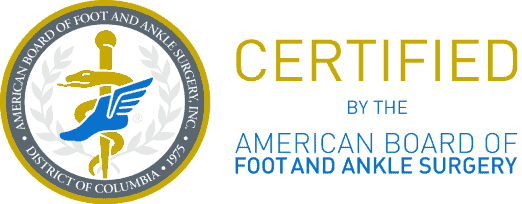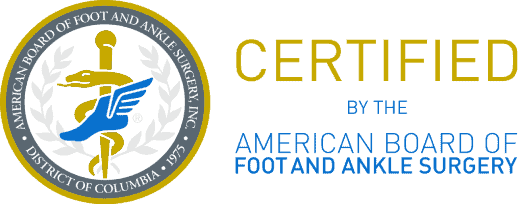TOE WALKING SURGERY (Achilles Tendon Lengthening)
ACHILLES TENDON LENGTHENING SURGERY FOR TOE WALKING
What Is ATL (Achilles Tendon Lengthening) Surgery?
Achilles tendon lengthening surgery is a procedure designed to extend the Achilles tendon, enabling children to walk with their knees straight and feet flat on the ground. This surgery is commonly employed to rectify toe walking in young patients who have not responded positively to conservative treatments.
Generally, this surgery is considered only after other non-invasive methods, such as physical therapy, bracing, and other conservative treatments, have proven to be unsuccessful.
ATL Surgery to Correct Toe Walking
Toe walking can be a concern for many parents, but how do you know if your child needs surgery?
Dr. Mikkel Jarman explains the criteria used to determine whether surgical intervention is necessary for toe walking in children.
Dr. Jarman outlines the key factors he considers: the age of the child, the results of the Silfverskiold test, and the effectiveness of conservative care. He explains why children over the age of 7-8 years are more likely to require surgery and how a clinical assessment like the Silfverskiold test helps diagnose the underlying causes of toe walking.
Achilles Tendon Lengthening (ATL) Surgery Process with Dr. Jarman
Dr Jarman's Toe Walking Surgery Process
Pre-Surgery Consultation:
The surgical process begins with a telehealth appointment to discuss your child’s specific situation and to determine their eligibility for surgical intervention. The day before surgery, an office visit is required for a thorough workup to confirm the child’s candidacy for the procedure.
Day of Surgery:
On the day of the surgery, patients need to arrive at the surgical center an hour before the procedure. The surgery is performed, and a cast is applied to protect the surgical site. Typically, patients can leave about an hour after the surgery. A mandatory two-week follow-up is scheduled to remove the initial cast, check the site, and apply a new cast with a special modification for easy removal at home.
Post-Surgery Care:
Around week four, the child transitions into a walking boot for two weeks. By week seven, an office staff member will call to discuss proper expectations as the child moves out of the walking boot and into regular shoes. Surgery is performed on one leg at a time, with the second leg typically scheduled 2.5 months after the initial surgery. The same procedure and follow-up process are followed for the second leg. Physical therapy is strongly recommended starting approximately six weeks after surgery, with a final telehealth follow-up scheduled six months after the initial surgery to confirm the child’s progress and graduation from the program.
Dr Jarman's Explains ATL Surgery
Achilles Tendon Lengthening is a surgical procedure performed when conservative treatments for toe walking fail. Dr. Jarman, with over a decade of experience, routinely performs this surgery every Wednesday. This procedure involves lengthening the Achilles tendon to allow for normal foot positioning and gait.
What Happens if You Wait Too Long For Surgery?
“Should we wait until they’re older?”
It’s one of the most common questions we hear from parents when it comes to toe walking—and Dr. Jarman has a clear answer.
In this short video, he explains why early treatment (around age 7 or 8) often leads to better, more complete results… and how waiting until 14 or 15 can actually limit how much correction is possible.
Post Surgery Recovery
The full recovery time takes between 3 and 6 months, depending on your child’s unique circumstances. Always follow your doctor’s instructions. The following is general advice to help you understand what to expect.
Your child leaves the surgery center with a cast on, which remains for four weeks, with no walking allowed during this period. After the cast is removed, they will wear a boot for 2 weeks and be partial weight bearing (PWB) at that time. They will likely have a prescription for pain medication, which may include ibuprofen, Tylenol, or something stronger if indicated. Follow your doctor’s instructions exactly when administering pain medication. If a prescription-strength medication includes Tylenol, never give your child additional Tylenol in between doses.
Nausea is a common side effect, particularly as the anesthesia wears off. This feeling may last for 24 hours. During this time, stick to a diet of clear liquids and foods that are easy to digest. Avoid heavy or greasy foods. If your child vomits, avoid any foods or liquids for 30 to 60 minutes.
Have your child rest the leg as much as possible for the first 48 hours, keeping it elevated. Pillows work well for this. It’s also helpful for them to wiggle their toes occasionally to help prevent swelling.
Schedule A Virtual Consultation with Dr. Jarman to asses your child's toe walking
Dr. Jarman's Toe Walking Surgery Success Stories
Julian's Story - 7 Years Of Chronic Toe Walking Resolved By Dr. Jarman
Watch 16-year-old Julian transform from chronic toe-walking to a pain-free, heel-strike gait through targeted soft-tissue surgery performed by Dr. Mikkel Jarman at Pediatric Foot & Ankle. See how precise tendon lengthening and ankle capsule releases restored Julian’s ability to walk, squat, and train without discomfort.
Jacob's Toe Walking Surgery | Part 2
Jacob shares his honest experience—his fears, his victories, and how Dr. Jarman helped him every step of the way. If your child struggles with toe walking, know that help is out there. Jacob’s story proves that a brighter, pain-free future is possible!
Jacob's Toe Walking Surgery | Part 1
Meet Jacob, a young boy who has been struggling with toe walking. In this video, we follow Jacob’s journey as he undergoes surgery to correct his condition, under the care of Dr. Mikkel Jarman at Pediatric Foot & Ankle.
How Dr. Jarman Changed Ari's Life with ATL Surgery
When Adio’s son Ari was young, he started walking on his toes. At first, Adio and his wife thought it was just a phase. But as Ari got older, he never grew out of it. Adio was worried – he wanted his son to be able to walk normally and play like other kids.
Dr. Jarman Treats Cameron's Chronic Toe Walking
Cameron began toe walking at around the age of two. After following the foot physical therapies and exercises recommended by their pediatrician with little to no improvement, she decided something needed to be done.
Dr. Jarman's ABFAS Certification
Dr. Mikkel Jarman, DPM, FACFAS, has received his Foot and Reconstructive Rearfoot/Ankle (RRA) Surgery board certification from the American Board of Foot and Ankle Surgery (ABFAS). This certification symbolizes the highest level of expertise that can be achieved in the foot and ankle profession, reflecting advanced proficiency and knowledge.

Your Child's Feet Are Designed For Life



